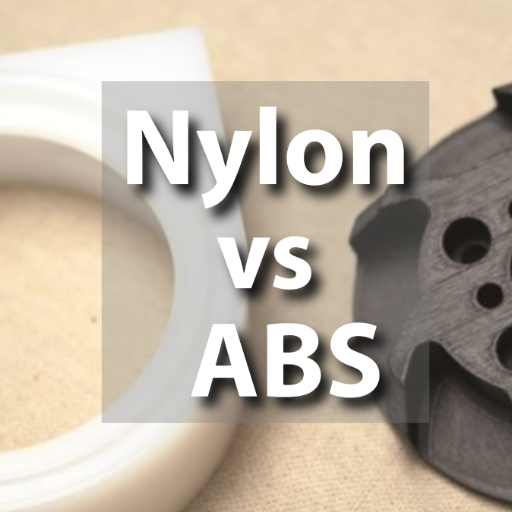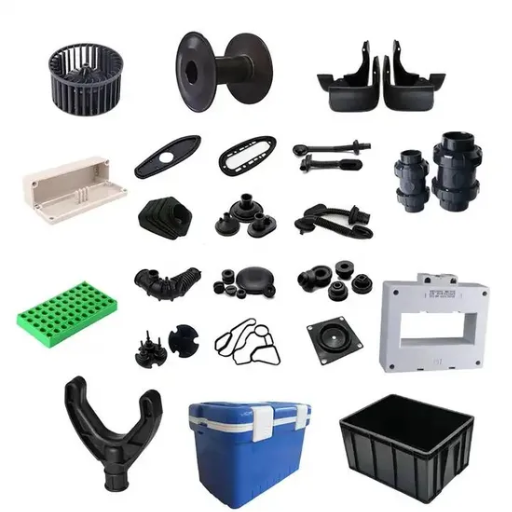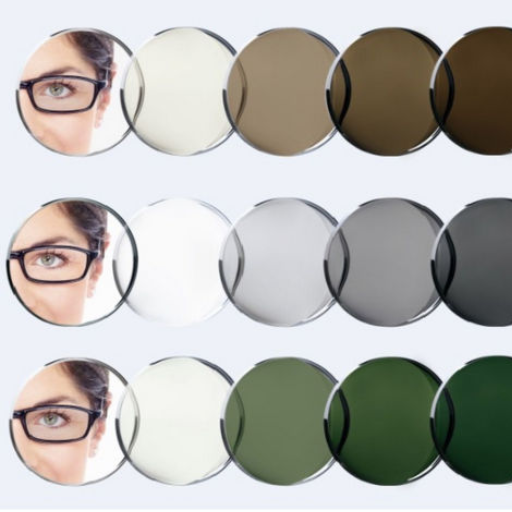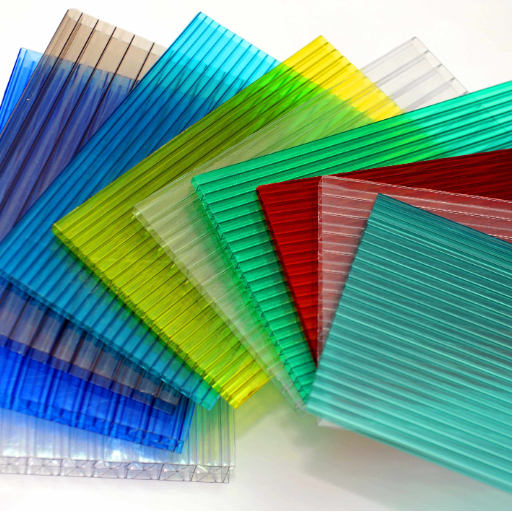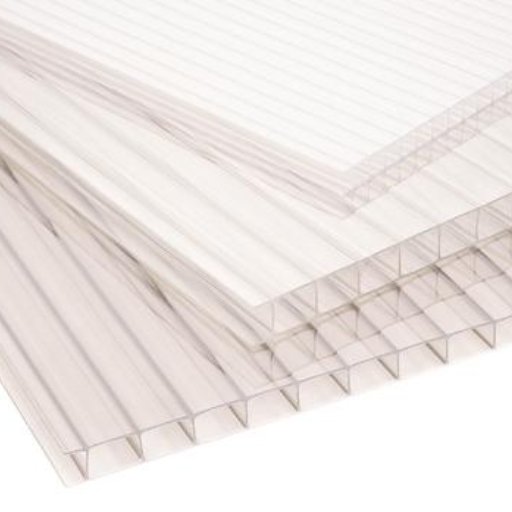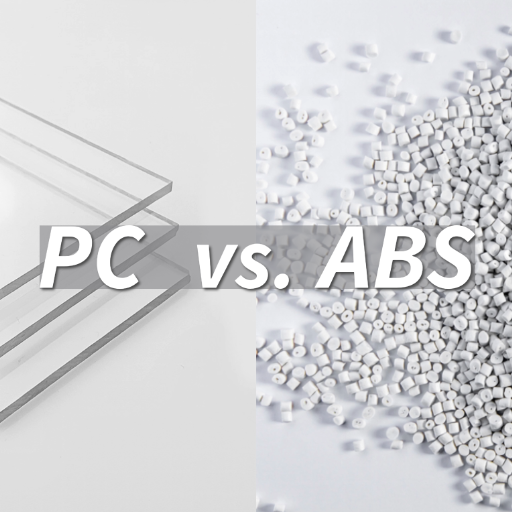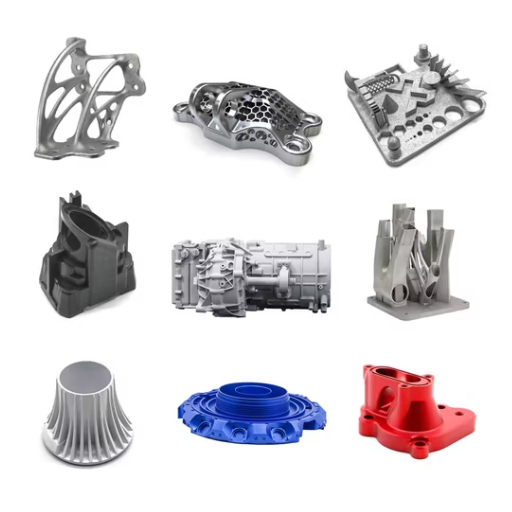Polyoxymethylene (POM), or acetal, is an engineering plastic of high performance used extensively in injection molding considering its remarkable mechanical properties, stability in dimension, and resistance to chemicals. However, POM can be detrimental if not accompanied with precision in controlling various processing parameters like temperature. This guide aims to outline the requirements regarding the temperature range of POM, along with the techniques for accomplishing successful injection molding of the polymer.
Thermal profile and critical temperatures for the cylinder and mold, along with the impact of cooling rates on the quality of parts produced are critical inputs obtained by the reader from the article. Best practices for temperature settings leading to consistent production outcomes, along with troubleshooting guides for recurring defects due to improper setting of the temperature will be elaborated in the article. These optimizations will ultimately increase the performance of POM components and significantly reduce injection-molding defects at the same time.
What is POM and its temperature range for injection molding?

Polyoxymethylene is an engineering thermoplastic with high-performance characteristics such as great mechanicals strength, stiffness, low friction and stability, POM’s tensile strength is further improved by molecular orientation. Rotating elements like gears, bearings, and other sliding parts that demand wear resistance and strength frequently employ wide-range precision tools.
The parameters for the processing temperature of the melt and the mold temperature for POM in injection molding is 190-230°C and 60-120°C, respectively. Adhering to the ranges also helps achieve a optimal flow, proper crystallization and avoidance of deformation techniques such as warping or degradation.
Understanding POM (Polyoxymethylene) material properties
Acetal or polyoxymethylene (POM) is classified as a high performance engineering thermoplastic due to its excellent mechanical and thermal properties. Its stiffness, low friction, and freely exceeding dimensional stability makes it most suited for delicate, precision applications to automotive, industrial and consumer goods. POM possesses excellent melting temperature at 175°C (slightly lower for copolymers) whilst also having outstanding resistance against solvents, fuels and lubricants. Low moisture absorption also acts to ensure that mechanical properties remain unchanged in humid areas. POM is also characterized by exceptional fatigue endureance, creating it a dependable material for high stress components.
Temperature range for POM injection molding
More commonly known as POM, polyacetal has a working melt temperature ranging from 190 to 230°C for the injection molding processes. It is critical that this temperature range enables polymer melting while preventing thermal degradation. The mold temperatures are to be set between 80 and 120°C to ensure appropriate surface finish along with good surface accuracy for geometrical factors. Prolonged exposure to high temperatures for POM is not attainable because of the thermal breakdown risk, which results in formaldehyde gas emissions, making it extremely important to keep the residence time in check. A well defined thermal regulation framework is pivotal in making sure internal and external part consistency along with material structural performance is achieved.
Differences between homopolymer and copolymer POM
As you may have guessed from the name, homopolymer POM comes with more enhanced strength compared to other types, thanks to its unique structure with a higher degree of crystallinity associated with it, in addition to it being stiffer and possessing superior fatigue resistance. No to mention hPOM also features marked improvements in thermal resistance compared to POM’s copolymer cousins. H polymer POM does have its flaws though like remaining prone to damage because of unique chemical structures and faster thermal degradation along with the risk of formaldehyde emission at high speeds.
In contrast, copolymer POM has increased resistance to thermal and oxidative degradation due to altered polymer chains, improving its stability under sustained heating. Furthermore, copolymer POM possesses better resistance to chemicals such as acids and bases while still retaining reasonable, although diminished, mechanical properties compared to homopolymer POM. These differences render the materials selection very application oriented, predicated on where the mechanical performance and environmental exposure resistance have to be optimized.
How does temperature affect POM’s mechanical properties during injection molding?

The thermal aspects during the process of injection molding have a profound effect on the mechanical properties of polyoxyethylene, POM. High temperatures during processing can facilitate flow and even molding, lessening internal stresses. These factors are favorable for uniform molding. On the other hand, excessive temperatures can cause degradation which can be thermal in nature, thus increasing weak mechanical strength and surface quality. Conversely, lack of proper temperature can result in formation of poor fusion at weld lines, filling mold incompletely whilst increasing brittleness due to residual stresses. Hence, they try to control temperature accurately to ensure that mechanical performance as well as linear dimensional accuracy of Polyoxyethylene is maintained.
Impact of temperature on POM’s strength and rigidity
As with any thermoplastic, temperature directly influences the strength and rigidity of Polyoxymethylene (POM). Higher processing temperatures are known to improve flow of the polymer which helps in the joining of welds and internal stress fractures. On the other hand, excessive heat can also lead to oxidative degradation or loss of crystallinity which drastically weakens the mechanical strength and precision of dimensions in the final product. Furthermore, low processing temperatures can lead to poor fusion of the polymer chains which results in brittle failure under stress. For this reason, maintaining optimal temperatures during the mechanical work permits POM to retain its exceptional degrees of tensile strength and stiffness, while allowing it to withstand prolonged mechanical and environmental fatigue.
Temperature-related dimensional stability in POM parts
POM (polyoxyethylene) parts show great sensitivity in their dimensional stability to processing and environmental temperature changes. During processing, the internal stress and shrinkage due to warping must be controlled with the cooling rate to avoid interruptions at a certain temperature (precise control of the cooling rate). POM’s dimensional stability in service is affected by its thermal expansion (CTE) or its coefficient of thermal expansion. In comparison to other thermoplastics, POM has comparatively low CTE which helps in maintaining POM dimensions during moderate temperature variations. However, continuous exposure to high temperatures near the glass transition temperature (~150°C) tends to deform or creep POM over time, particularly when constant load is applied. Designers need to ensure proper performance by including tolerances based on the assumed thermal and, if needed, considering reinforced grades of POM for better stability.
Creep resistance and temperature correlation in POM
Creep resistance of Polyoxymethylene (POM) is typically superior compared to other materials, making it effective in bearing loads. The material’s dimensional stability is significantly affected by the temperature and the time duration the load is applied. POM consists of highly crystalline regions and exhibits stiffness, which contributes to it not undergoing much deformation due to load at moderate temperatures, below 100 degrees Celsius. On the other hand, approximately 150 degrees Celsius is close to glass transition temperature, meaning the thermal energy available is enough to shift some of the polymer chains. This shift does lead to more deformation under the sustained loads. Adding glass fibers or more mineral fibers into reinforced grades of POM does increase the resistance to creeping in lower temperatures by reducing motion in the chains, thereby improving the material’s performance. Precise calculation of the stress limits, the time the load is applied, and the temperature during operation is equally important when maximizing the design for POM in engineering work.
What are the optimal mold temperatures for POM injection molding?

The optimal range for POM mold temperatures for injection molding is usually between 80°C to 100°C and 176°F to 212°F (Celsus to Fahrenheit). In this range, proper flow and crystallization are attained, which affect the mechanical properties and surface finish of the product. If a lower range is used, incomplete filling or poor dimensioning is less stable. If the higher range is used, the polymer is prone to degradation. Also, other aspects such as part geometry, the grade of POM, and wall thickness should be incorporated in order to set temperature controls for the user’s specific needs.
Recommended mold temperature range for POM
Depending on the specific grade of polyoxymethylene (POM) precision engineering plastic, uniformity of the material, and the characteristics of the final product, the mold temperature is between 80°C to120°C. Keeping this balance allows equipment flow through the channels while the structure cools, preventing warping and increasing the accuracy of measurements. For optimal surface finish with improved geometric accuracy, higher temperature provide additional benefits. A simpler structure with fewer details requires lower temperature guidelines. Each manufacturer has a data set outlining the optimal settings for every grade of POM and it is critical to refer to these outlines.
Effects of mold temperature on POM part quality
Temperature of the mold is fundamental when it comes to crystalline structuring, surface polishing, and determining mechanical properties in the components made from polyoxyethylene (POM). It is clear that higher mold temperatures result in superlative crystallinity and consequently increases strength, durability, and stiffness in the final part manufactured. Additionally, that also supports better surface finish which gets rid of stress concentration or surface defect possibilities. On the contrary, lower mold temperatures does not offer adequate crystallinity, that does not aid in achieving the mechanical performance parts or the parts with lower shrinkage related issues.
It is very crucial to set an optimum temperature in the mold with respect to the surface contour of the part, the surface finish, and the parts functional requirements. Meeting these objectives is essential not only for improved production efficiency but also for maintaining the consistency of part integrity. Always check with the manufacturer suggestions for particular processing parameters to achieve best possible results for the set objectives.
Adjusting mold temperature for different POM grades
The thermal behaviors of POM grades affect performance optimization. Each grade is made for different applications. It is important to set the mold temperature correctly to adjust POM performance. Homopolymer POM grades have a wide range of crystallinity and strength from 80 to 120 degrees celsius. Copolylmer POM grades have better thermal resistance. Their range is from 70 to 100 degrees celsius which provides balance between mechanical properties and dimenisonal stability. Surface strength, strong tolerances, and low stress requires high performance grades which boost temperatures above 100 degress celsius. Crystalline structures with low shrink marks are obtained with these temperatures. Long term durability comes when correct temperature is maintained along with greatly reduced sink marks. As with all processes involving thermoplastics and their molds, carrying out initial tests will lead to optimal results. Always keep in mind specific details for the technical data sheet associated with the requred POM grade selected.
How to determine the maximum continuous service temperature for POM?

To locate the maximum continuous service temperature for POM, the thermal properties from the POM technical data sheet must be analyzed. The Heat Deflection Temperature (HDT) or continuous use temperature designates by the manufacturer serves as the upper limit a material’s temperature can be while still maintaining its mechanical properties without significant deformation or degradation. From the perspective of the specific application, other factors such as the load, exposure time, environmental conditions (chemicals or UV), and construction materials can be useful for predicting performance at elevated temperatures. For critical applications, long-term thermal aging tests under service conditions are recommended to validate the material’s suitability.
Factors influencing POM’s maximum use temperature
The Factors influencing the maximum use temperature of Polyoxymethylene (POM) plastic include: the grade of the plastic used, exposure to chemicals or certain radiations for a long time, and other additives including stabilizers. These can extend the plastics temperature limits by inhibiting oxidative deterioration and thermal breakdown. The use of thermal performance, and the relative environment considerably dictates the performance and limit of the Polyoxymethylene POM plastic which includes UV exposure, chemicals, moisture presence, as well as heat. The specific grade of POM can also influence the results obtained as copolymer grades are known to exhibit lower thermal resistance compared to their homopolymer counterparts. The forming grade with higher crystallinity. When testing the material and selecting it, these conditions should be taken into account in order to get a trustworthy result for the prescribed use temperature.
Comparing continuous use temperatures of homopolymer and copolymer POM
Copolymer POM is known to withstand slightly lower temperatures than homopolymer POM, however, under prolonged heating, copolymer POM is far more thermally resilient. This phenomenon can be attributed to the former’s thermal resilience causing a slower rate of formaldehyde discharge when heated, along with reduced susceptibility to thermal decomposition. The continuous use temperature of both is estimated to bearound 100-104°C. In general, both variants should be selected alongside considerations regarding the intended operational application with respect to continuous use temperature.
What are the best practices for temperature control in POM injection molding?

To achieve optimal performance, mechanical properties, and overall structure of pom, controlling the temperature during the injection molding phase is crucial. Here are some main practices:
- Maintaining Recommended Barrel Temperatures: Observe manufacturer specifications and keep temperatures beyond 190°C (374°F) and below 230°C (446°F) to avoid emission or degradation of formaldehyde.
- Controlling Mold Temperature: Ensure that the mold is somewhere between 80°C (176°F) and 110°C (230°F)so that there is enough material flow whilst controlling shrinkage.
- Monitoring Residence Time: Expose materials to lower barrel residence time so that degradation does not occur. Also, do not cross gradually increase the high-end mark as it weakens structure and discoloration occurs.
- Ensuring Uniform Heat Distribution: There must be strict marking all over the injection region during the process of heating. This reduces the chances of overheating or cold spots.
- Melt Temperature Measurement: It is requested to measure the melt temperature directly while ensuring it stays within the recommend range uniformly throughout the cycles, during high-speed or high-pressure cycles.
- Preventative Maintenance: Periodic examination and cleaning of the barrel, screws, and molds for contamination will ensure the efficient heat transfer.
Manufacturers, by adhering to these practices, are able to optimize the processing of POM, defects and components lifespan issues are also minimized.
Essential temperature zones in the injection molding machine
To ensure effective results, control over specific temperature regions of the injection molding machine should be maintained to enable temperature regulation. The objectives to achieve concrete flow, melt quality and production defects free production include:
1. Feed zone: This lower part of the barrel contains augers whereby the plastic granules are loaded into the injection mold. Therefore, a moderate temperature is required to soften the material without causing it to melt.
2. Compression zone: This middle region of the barrel is heated to further aid in complete melting. In this stage air cavities are removed and homogeneous structure is formed.
3. Metering zone: This last section has polymer with optimum melt temperature. Here precision control is necessary for smooth flow into the mold cavity to avoid degradation and thermal cracking.
4. Nozzle zone: The end of the barrel has a nozzle which pours fully molten material into the mold. Here control of temperature is critical to prevent solidification prior to injection while avoiding excessive heat which may burn the material or lead to deterioration of the injection mold.
By controlling the appropriate temperatures in each zone, the manufacturers can better the molding procedure, minimize material waste, and achieve uniform and high-quality parts.
Optimizing material temperature for POM processing
When working with polyoxyethylene (POM), the precise temperature control of the material needs to be within strict limits to ensure maximum performance while preventing damage to the material. The commonly recommended range for the melt temperature of POM, depends on the grade and manufacturer, usually lies between 190°C to 230°C. To achieve a smooth melt flow, individual barrel temperature profiles must be increased progressively towards each zone and across each section.
Optimization key pointers can include controlling the thermal stability because POM can release formaldehyde gas while degrading when exposed to excess thermal stresses, degrading the material. The snug fit of the nozzle requires meticulous regard to guarantee no untimely solidification occurs to allow smooth injection of molten material. Moreover, finished parts’ surface quality and structural integrity is maintained when mold temperatures are kept around 80°C to 110°C. Systematic planning coupled with maintaining prescribed ranges will mitigate defect concerns such as warping, sink marks, or surface imperfections, ensuring cost effective production of high quality parts.
Avoiding temperature-related defects in POM parts
Meeting all control restrictions associated with POM processing, enhances the precision avoidance of the temperature based defects. To begin, barrel temperatures must be set within the 190°C to230°C range to ensure consistent flow of polymer without risking degradation. Unfavorable high temperatures results in thermal decomposition while low temperatures lead to incomplete melting and flow issues.
To prevent the sudden cooling of the nozzle which could impede smooth melt flow and create internal stress or voids in the part being manufactured, temperatures must match the output of the molding barrel. The same emphasis is placed from within 80ºC to 110ºC where crystallization is optimal with little to no variation in shrinkage. Deficient control of cooling rate on the mold can cause imprecision dimensional deviation or undesirable bending.
As a last step, to avoid temperature deviations due to machinery wear, schedule regular maintenance for the injection molding equipment. Defect-less high-quality POM components can be produced with enhanced precision control using real-time monitoring systems.
What are the key considerations for POM’s temperature range in extrusion processes?

Keeping the temperatures at the designated ranges is fundamental during extrusion processes to guarantee quality and repeatability of POM (Polyoxymethylene) products. Uniform melting and optimal viscocity is acheived when the barrel temperature is kept in the range of 190°c to 230°c. If the temperature is too high, thermal degradation will occur and cause the release of formaldehyde which will greatly harm the properties of the material. On the other hand, too low of a temperature will not fully melt the material which will make the process unstable due to the insufficient flowability. The temperatures of the die must also be within a certain range to obtain smooth flow of the material into the die and to reduce die swell or inaccuracy in the dimensions of the final extruded product. Consistent monitoring and control of the temperature profile through the course of the extrusion process is essential for obtaining set targets free of defects.
Temperature profile for POM extrusion
In order to achieve smooth POM extrusion, having the right die temperatures set along with the entire temperature profile is critical for optimal results. The ideal range turning the barrel is between 190°c to 230°c as it supports positive melting yielding the desired polymer viscosity. Too high of a temperature will risk thermal degradation, releasing formaldehyde, and damage mechanical properties. Too low of a temperature will create an incomplete melt which will yield undesirable material flow.
Die temperature greatly impacts the achievement of accuracy. Keeping the die temperature at the upper bracket of the barrel profile will allow for proper flow through the die, lower die swell, and reduce inaccuracies in the dimensions of the extruded part. The barrel and die temperatures also need to comply with the grade of resin for uniformity.
Changes in the settings should also be made using the material regulation data sheets and observation of the extruder temperature indicators. These parameters can be met using automated control systems, frequent calibration of tools, definable standards along with broken output, and unchanging conditions designed without ‘desirable’ flaws.
Cooling and solidification temperatures for extruded POM
It is required to control the cooling and solidification rates for extruded Polyoxymethylene (POM) so that dimensional stability and warping is achieved. The temperature of the cooling water is usually maintained between 50 and 80°C. This promotes dissipation of heat in a controlled manner without thermal stresses. If cooling occurs too quickly, internal stresses will occur as well as negatively impacting the crystalline structure; if cooling occurs at a rate too low than this range, the extruded POM will experience dimensional inaccuracies. It is known that POM’s crystallization occurs at approximately 150 – 165°C depending on the grade of polymer. The temperature range for crystallization is around mid 150s and 165 degrees. These temperatures and ranges allow for improved structural and surface quality of the end product. Molds can result in consistent cooling along the length through controlled water flow rates set to the extrusion speed.
Reference
Frequently Asked Questions (FAQ)
Q: What is POM plastic and what are its key characteristics?
A: Polyoxymethylene (POM) a.k.a. acetal or polyacetal, is a semi-crystalline, thermoplastic polymer with distinctive mechanical and chemical properties. POM’s most notable characteristics include fractural toughness, low friction, important static strength, exceptional electrical properties, and battling dimensional changes. It is considered prized for its proclaimed tensile strength, temperature resistance, and the saturation of water it can withstand osmotic pressure from, and all these make it valuable for numerous industrial engineering works.
Q: What is the melting point range for POM resins?
A: POM resins do have a melting point within the range of 162°C to 175°C (324°F to 347°F). The gauge determining the transition temperature which would be a stem coming from the question whether it is a homopolymer or a copolymer makes a difference is critical. This range is very relevant with respect to the temperature while working on POM materials by means of injection molding.
Q: How does the polymerization process affect POM’s properties?
A: POM’s properties are largely dictated by the polymerization process. POM homopolymer forms from an exceptionally dry monomeric formaldehyde that gets polymerized through anionic catalysis in organic liquid reaction medium. That results in a polymer possessing superior mechanical strength along with heat resistance when compared to copolymers. Other than that copolymers, often made with trioxane offer better thermal stability and easier processing.
Q: What are the benefits of using acetal (POM) in injection molding?
A: The benefits with using acetal or POM in regards to injection molding are remarkable low weight with high strength drilling up to frictionless tight tolerances, exceptionally high trustable impact, and low weight abrasion durability under severe changes in temperature. This composition makes POM axial impact and stressless suited for high precision rotating parts in vehicles, consumer electronics and industrial machinery.
Q: Before injecting molding, what is the recommended drying temperature for POM?
A: The optimal range for POM seems to be between 80°C and 100 °C (176 °F and 212 °F) prior to molding. It is important that POM is properly dried to mitigate capturing too much moisture, as moisture can cause issues during processing and negatively captivate the product’s quality. This time and temperature of drying will set according to the specific grade of POM being used.
Q: In what ways would the semi crystalline structure of POM impact its processing?
A: The semi-crystalline structure of POM affects the processing as it undergoes crystallization during cooling which impacts shrinkage and warpage. The ranges of cooling in addition to the powerful and stiff crystalline structures stubbornly force POM to possess high strength, precludes those areas marked as Molding criteria from stress control mechanisms onto internal cooling controls. It creates a limitation on the rate of cooling like when trying to achieve accuracy for dimensional tolerances during injection molding which increases the chances of attaining accuracy in size.
Q: What are some common processing challenges when injection molding POM?
A: Shrinkage and warpage, release of formaldehyde at high temperatures of processing are few of the challenges of working with POM. Moreover, the low degree of friction of POM also causes feeding problems in the injection molding machine. Overcoming these challenges Mold design, control of temperature, and proper handling of materials is essential.
Q: How does POM compare to other engineering plastics with regards to long-term heat resistance?
A: Longitudinally observing materials with industrial purposes, POM easily overcomes most engineering plastics in long-term heat resistance. Certain grades preserve mechanical properties under higher temperatures and can be withstand constant exposure of up to a hundred degree Celsius (2 hundred 12 degree Celsius). However, when it comes to waiting polyamides or polyetheretherketone (PEEK) they pose better actually requiring more focus in considering the grade of POM, its application, and the amount of heat-resistance set at POM is needed to address the necessity of enhanced temperature endurance.







